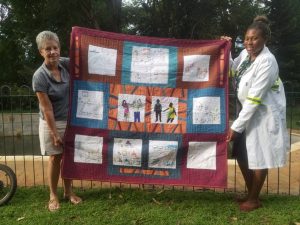
Tina Weare, a leading quilter in Harare, trained the girls of WAP to produce blocks which were assembled in the US by Allison Wilbur and returned to Africa in late 2019. Tina is shown with Constance Mugari and the finished quilt.
The squares in this quilt describe the many pressures on girls to marry in Zimbabwe. Over a third of all girls in the country marry before the legal age of 18.
In response, the Women Advocacy Project (WAP), based in Harare, has launched an imaginative campaign to inform girls about the risks and provide them with a reason not to marry. At the heart of the campaign are two girl “ambassadors,” Evelyn and Trish, Their job is to mobilize girls in Chitungwiza and Epworth, two neighborhoods of Harare which suffer from chronic poverty and unemployment.
Evelyn and Trish have organized around 40 girls into two clubs. They meet every week and discuss child marriage. If Evelyn and Trish spot a girl who seems vulnerable to marriage, they inform Constance Mugari, the founder of WAP. Constance will then intervene with the family and explore different options.
Zimbabwe’s economy has been in a free fall for months, and this puts enormous pressure on parents to marry off daughters into a wealthier family. In an effort to prevent this, WAP and AP are training the girls to produce and sell soap.
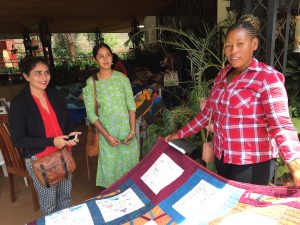
Constance Mugari from WAP shows the Child Marriage Quilt at a meeting of the Kenya Quilt Guild in Nairobi.
The club members have also graphically described the problem through embroidery. In July 2019 Peace Fellow McLane Harrington helped Tina Weare, chairperson of the Harare Patchwork and Quilting Guild, to offer a week of embroidery training, to eleven girls. They described the crisis through a series of graphic blocks. McLane brought the blocks to the US, where they were assembled into an advocacy quilt by Alison Wilbur in Rhode Island.
In November 2019, AP exhibited the WAP quilt at the UN Summit on women and girls (ICPD 25) in Nairobi. Constance used the opportunity to make a strong case for empowering girls. After the conference finished, Iain Guest from AP took the quilt to Zimbabwe. The girls were fascinated and delighted to see how their blocks had been turned into a true work of art.
WAP and AP will continue to use the quilt in our advocacy in Zimbabwe and the United States. We will accelerate soap production and hope to build friendships between the girls in Zimbabwe and High School students in the US. We welcome feedback and suggestions.
Our thanks to WAP’s donors including McLane Harrington, Rockflower and Action for World Solidarity for generously supporting this program.
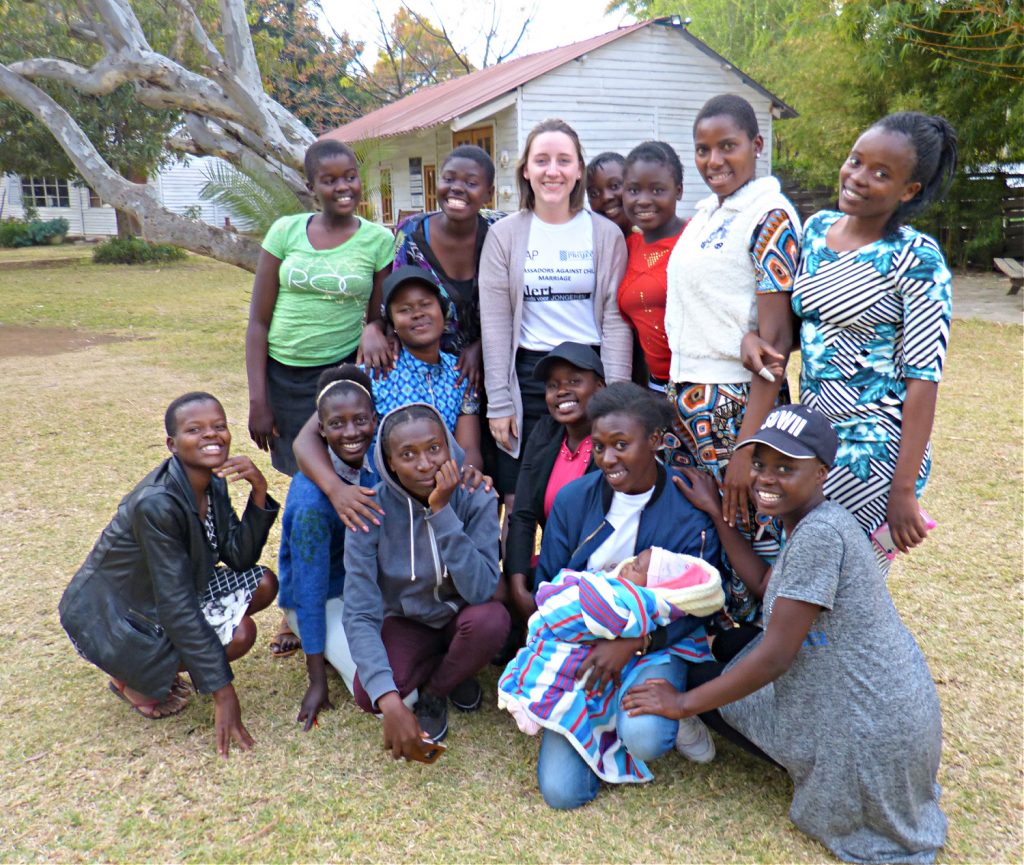
McLane Harrington, an AP Peace Fellow, raised funds for the embroidery project, helped the girls with their designs, and took their squares back to the US, where they were assembled into a quilt by Allison Wilbur.
Kundai – Family pressure
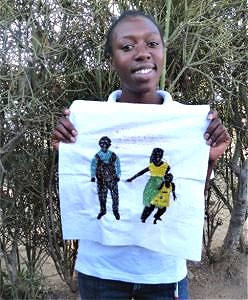 Kundai’s dramatic square shows a young girl being constrained by her guardian and given over to an older man to be married. Guardians fulfill a vital function when children are orphaned, but this particular guardian resents the time and expense she has put into the girl and wants to be compensated. She feels that this will only happen if the girl marries a much older man – even it is against her will.
Kundai’s dramatic square shows a young girl being constrained by her guardian and given over to an older man to be married. Guardians fulfill a vital function when children are orphaned, but this particular guardian resents the time and expense she has put into the girl and wants to be compensated. She feels that this will only happen if the girl marries a much older man – even it is against her will.
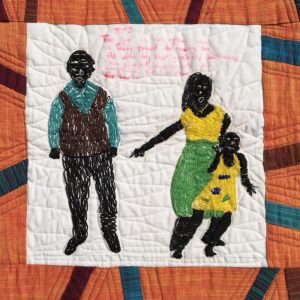
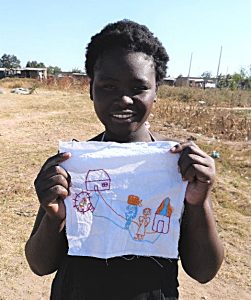 Patience – Parental pressure
Patience – Parental pressure
Patience’s square shows a mother forcing her daughter into marriage against her will. The girl is very sad to be leaving the family home. But her parents are so poor that they need the income that will come through the girl’s husband.
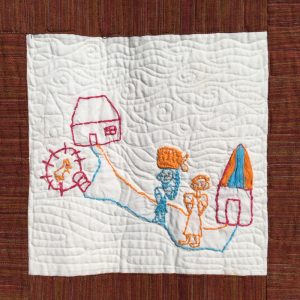
|
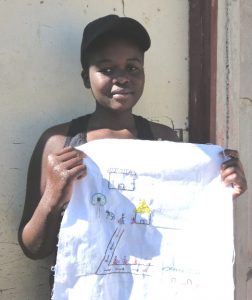 Tanatswa – Orphans Tanatswa – Orphans
The head of household in Tanatswa’s square is a 16-year-old girl whose parents have died, leaving her to care for six younger siblings. Four are pictured going to school, while the two younger children are playing at home. Their older sister is engaged in a relationship with an older man because she cannot bear the burden on her own, but this will create many difficulties – such as dropping out of school, depression, and unwanted pregnancies.
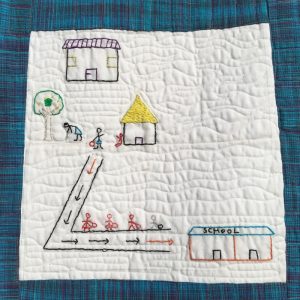
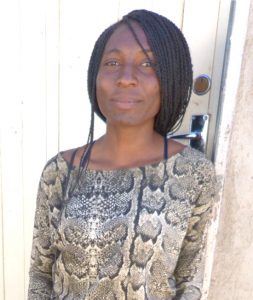 Lynn – Domestic violence Lynn – Domestic violence
When a young woman is forced into marriage she will face many problems because the interests of the husband and wife will differ. This means that they won’t be complementing each other but competing. Lynn’s square shows a husband beating up his wife: “This is physical abuse and it is happening within our communities because many forced marriages are occurring on a daily basis. Cases of domestic violence are increasing.”
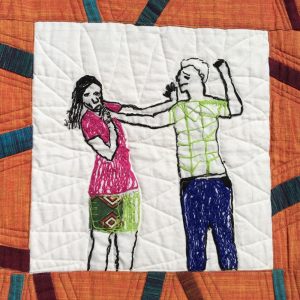
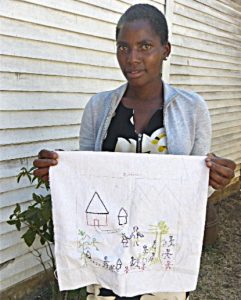 Beauty Chibada – Harmful practices Beauty Chibada – Harmful practices
Beauty’s square tells the tragic story of Rumbidzai, a teenager who was given in marriage to a 60-year-old man after her father killed a boy from the man’s family: “In our Shona tradition a virgin must be offered to the family of the dead person as payment for a murder, so that she can bear a child to replace the deceased. But this put Rumbidzai at risk because her pelvic bones were not yet mature.” Rumbidzai is shown getting married to her old husband.
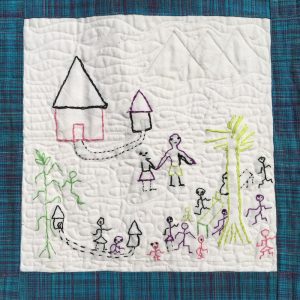
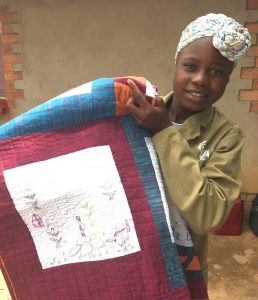 Emily – Poverty Emily – Poverty
The girl shown in Emily’s square is desperate. She was living with her grandmother at home, but they had no food to eat or clothes to wear. As a result, she moved in with her boyfriend, only to became pregnant. Her boyfriend already had five children and decided that the house was too small for them all, so he kicked the girl out.
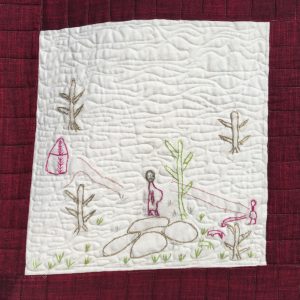
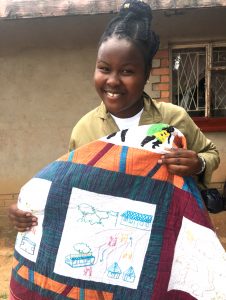 Trish – Poverty and prostitution Trish – Poverty and prostitution
In this square Trish explains how poverty leaves schoolgirls vulnerable: “Some schools in Epworth are near shopping centers where beer is sold. When children (shown as yellow figures) go to school, they often pass prostitutes (pink figures) who tell them that school could be so much better with nicer uniforms and beautiful shoes. Often girls will agree and enter prostitution. Many end up affected by HIV and AIDS.”
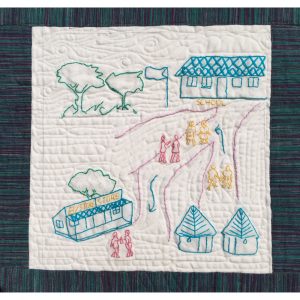
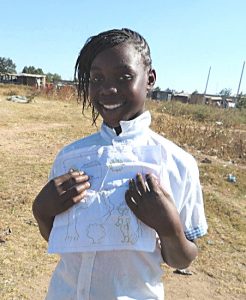 Beauty Tembo – Abandonment and suicide Beauty Tembo – Abandonment and suicide
Beauty’s square shows a girl who has been chased away by her parents because she has become pregnant. Her boyfriend has also rejected her and denied that he is the father of her child. Adding to the family’s distress, her parents have sold all of their cows and do not have anything left. The girl is shown under a tree contemplating suicide. Behind her, the family corral is empty of animals.
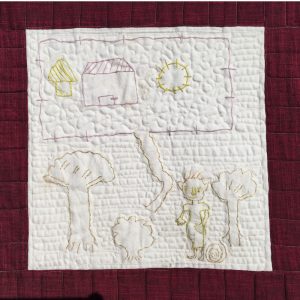
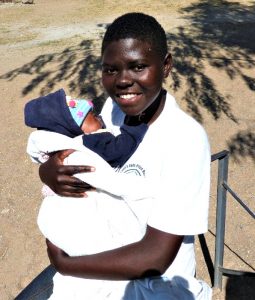 Beauty M – Interrupted education Beauty M – Interrupted education
Beauty writes: “The clay pot stands for a girl of 16 who was doing her O-level (in school). The ball stands for boy who is twenty-one. He met the girl and got her pregnant, but when the girl claimed that the child was his, he denies it. The clay pot cracks and is broken into pieces. Water spills from the pot, indicating that the girl’s life is shattered. She cannot go on with her studies because she is the one taking care of the baby.”
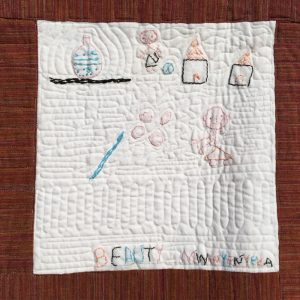
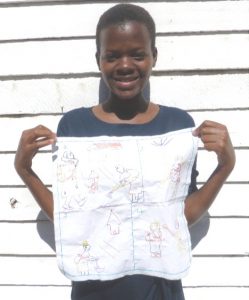 Hazvinei – Poverty and sanitation Hazvinei – Poverty and sanitation
Hazvinei’s square describes how being an orphan can force girls into marriage, with disastrous consequences. Some orphaned girls become so desperate that they marry an older man, thinking that he will protect them. Instead, says Hazvinei, “they get themselves into trouble.” In Hazvinei’s first panel the young girl is sad because she cannot go to school. In panel 2 she becomes desperate. Panel 3 – the girl has married and does chores in the house, carrying her own baby. In panel 4 she is beaten by her husband.
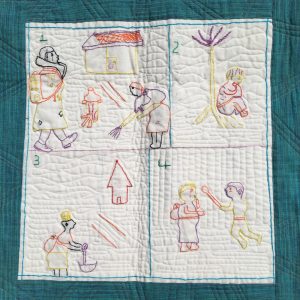
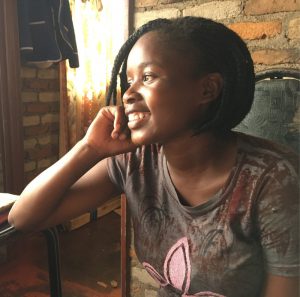 Evelyn – Religion Evelyn – Religion
Evelyn’s square shows a 13-year-old girl being forced to marry an old man who is a leader at her local church. The man already has four wives and many children, but was allowed to marry the girl after telling the congregation that he had dreamed of her sweeping out his compound. This was seen as a sign from heaven and the girl had no choice but to marry into the polygamous family. Evelyn shows the old man sitting under a tree with his cane among his wives. His new young wife is carrying water and is pregnant.
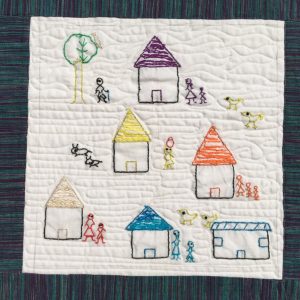
|



 Kundai’s dramatic square shows a young girl being constrained by her guardian and given over to an older man to be married. Guardians fulfill a vital function when children are orphaned, but this particular guardian resents the time and expense she has put into the girl and wants to be compensated. She feels that this will only happen if the girl marries a much older man – even it is against her will.
Kundai’s dramatic square shows a young girl being constrained by her guardian and given over to an older man to be married. Guardians fulfill a vital function when children are orphaned, but this particular guardian resents the time and expense she has put into the girl and wants to be compensated. She feels that this will only happen if the girl marries a much older man – even it is against her will.




















